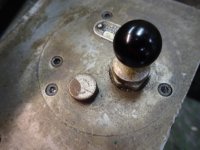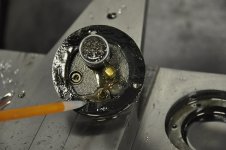Jersey John
Stainless
- Joined
- May 29, 2015
- Location
- Beccles / Suffolk, United Kingdom
Hi folk
I'd like to remove the Oil Lubrication pump assembly to clean and service but sadly it's just stuck solid.
Hardinge HLV-H Oil Pump
Tried being gentle but not moving so I guess the old oil has glued it in place
Can anyone offer removal methods through their experiences.
Thanks very much in anticipation
John

I'd like to remove the Oil Lubrication pump assembly to clean and service but sadly it's just stuck solid.
Hardinge HLV-H Oil Pump
Tried being gentle but not moving so I guess the old oil has glued it in place

Can anyone offer removal methods through their experiences.
Thanks very much in anticipation
John













 .
. ... still got to get this bl**dy flange out first!
... still got to get this bl**dy flange out first!